Nagorno Karabakh Observer does not endorse, confirm nor deny the content of official publications and is not responsible for the nature of its content.
- Sources of information either in hyperlink or in parenthesis: e.g. (1, 2, 3)
- All times are local times
Overview
The deadliest clashes since the 2016 April war broke out at around 13.45 hours on 12 July, clash erupted on the internationally recognised border between Armenia and Azerbaijan near the Azeri village of Aghdam, which lies between the Armenian villages of Movses and Chinari. During the next few days, the area of military operations extended to an area of approximately 40km between Berkaber and Chinari villages in Armenia based on available official information.
The clashes continued to be of different intensities in different areas, with the area between Aghdam, Azerbaijan and Movses, Armenia seeing most combat operations according to reports. Particularly, mountain ridge lying on the frontier called “Black Rock” (Azeri, Qaraqaya or Qaradaş; Armenian, Sev Kar), with a height of approximately 1000 metres overseeing villages on both sides, has been the main area of tension. During the clashes the use of small arms fire, mortars, artillery, armoured vehicles as well as loitering and reconnaissance unmanned aerial vehicles (UAV)was reported. The exact cause of the incident remains disputed between the two sides.
Attention was brought upon one particular Azeri military position, located metres within Armenia’s internationally-recognised territory. Based on open source information, there are indications that an Azeri military position was overrun by Armenian troops; a non-official video circulating in Armenian news media was geolocated at a location (40°54’23.39″N, 45°31’38.69″E) known to be behind this military position 570 metres to the closest Armenian military position. Between 12-16 July, Armenian defence officials posted photos showing bodies of Azeri troops behind the mentioned military position (1, 2); Armenian officials did not comment on the news about overtaking a military position, not denying nor confirming the news. On the contrary, the news was strongly refuted by Azeri media quoting defence spokesman Vaqif Dərgahlı, as well as a news report from 17 July from local Ictimai TV.
Map of Qaradash/Sev Kar heights and the military positions compared with borders
Map source: Maxar Technologies, Google, US Dept of State Geographer
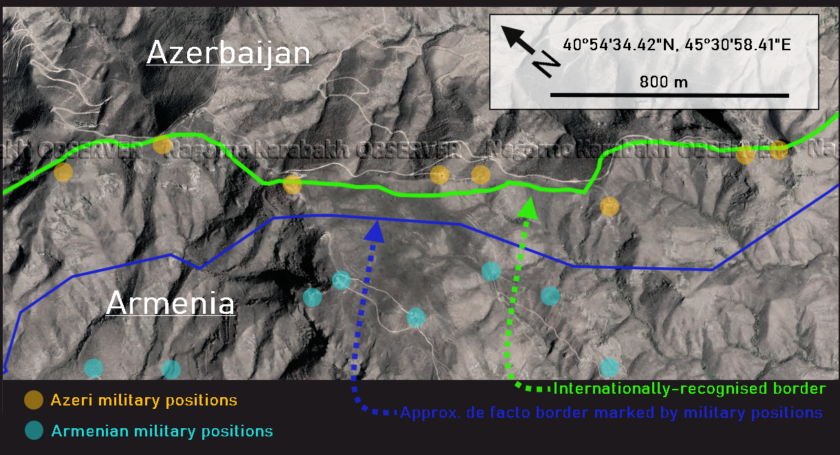
Reports of civilian areas being targeted – Military positions on both sides of the border have been targeted, there have also been reports of villages being targeted by both sides, referring to the villages of Chinari, Karmir Aghbyur, Berkber, Aygepar and the town of Berd in Armenia (1, 2) and Dondar Kushchu, Aghdam and Vahidli in Azerbaijan. (1, 2)
Losses – Azeri defence officials have so far conformed 12 fatalities (including a general and several officers) and a number of injured, (1, 2, 3, 4, 5, 6, 7); Armenian defence officials have reported five killed and 35 injured on their side. (1, 2, 3, 4, 5, 6)
General map of the area of reported clashes based on official government sources at the time of writing
Map source: CNES/Airbus, Landsat/Copernicus, Google, US Dept of State Geographer

Photos of reported fallen Azeri soldiers behind a military position, presumably overtaken by Armenian troops, geolocated through photos provided by Armenian defence officials
Map source: Maxar Technologies, Google, US Dept of State Geographer
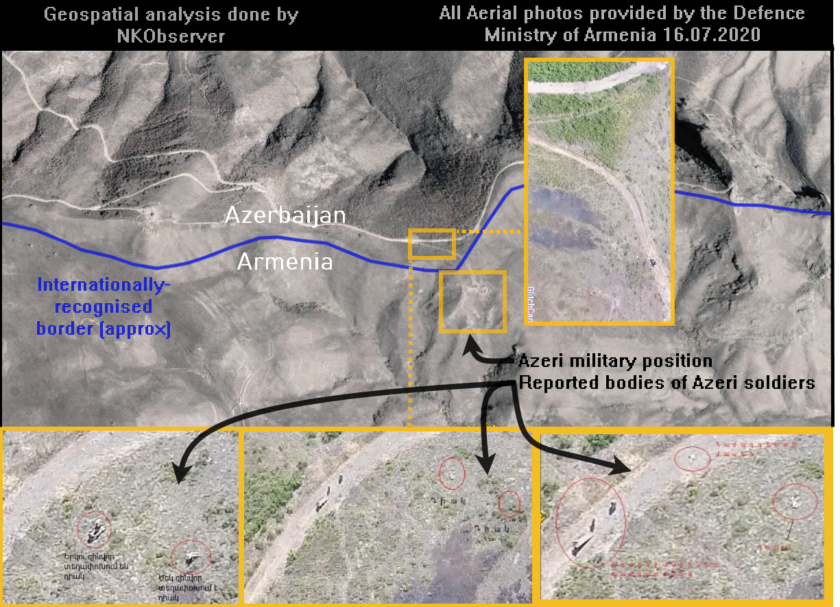
Official statements from Armenia’s Defence Ministry
The first official news on the incident came from the spokeswoman of Armenia’s Defence Ministry, who at around 18.00 hours local time reported that at 12.30 hours on 12 July, an Azeri military UAZ jeep had approached the Armenian border apparently trying to breach it and was fired upon. The occupants of the vehicle fled, and an hour later at 13.45 hours Azeri troops tried to capture an Armenian position aided by ground fire, including artillery (sic). The statement concluded that they “were suppressed” (sic) with no losses on the Armenian side at the time of occurrence.
12 July
- At 23.00 hours on the same day, the defence spokeswoman stated that the Azeri side had resumed fire on in the same area using 82mm mortars and “a tank” (sic).
13 July
- At 1.13 hours, the Armenian defence spokeswoman gave an update stating that a firefight continues at varying intensities and that their side has no losses.
- At 1.21 hours, another update was provided, stating that the country’s armed forces do not target civilian homes, but only military infrastructures and hardware.
- At 2.24 hours, Armenia’s defence spokesperson stated that the country’s defence minister, Davit Tonoyan, is in constant contact with the OSCE’s Personal Representative of the Chairperson-in-Office, Andrzej Kasprzyk. During a conversation with the latter, the defence minister highlighted that he had ordered the military to remain restrained in actions, but if “provocations” (sic) continue, Armenian troops will respond, including and up to taking more favourable positions.
- At 8.20 hours, Armenia’s defence spokeswoman updated news on the clashes, stating that after a pause between 3.30 and 5.30 hours (1), clashes have resumed with the Azeri side using artillery against Armenian positions. The statement ended with the official stressing that they do not “exclude the possibility of further [Azeri] losses”
- At 10.35 hours, news of the first casualties were provided, with two servicemen lightly injured when the building they were in was targeted by Azeri fire.
- At around noon, Armenia’s defence minister, Davit Tonoyan, gave a briefing during a government meeting mentioning that the Azeri side “has significant losses” (sic) and that artillery shelling periodically takes place.
- At 15.26 hours, the defence spokeswoman stated that tensions periodically increase along the border, however, at the time of the statement the use of artillery and unmanned aerial vehicles had decreased; it concluded stating that the Armenian side had no losses at the time of writing.
- At 16.30 hours, former defence spokesperson mentioned that seven 82mm mortars were fired on homes in the village of Chinari, no injuried were reported but a house was damaged.
14 July
- At around 9.00 hours, Defence officials stated that Azeri tank movements were seen and “responded to”, concluding that the situation on the border at the time of writing was relatively calm.
- At 11.15 hours, officials reported an Azeri UAV targeting civilian infrastructures in the town of Berd, approximately 14 km north east of the initial starting point of the flare-up.
- At 11.24 hours, officials posted a video showing Azeri military positions that were targeting villages being targeted by the military. (see video below)
- In the afternoon, the first Armenian fatal losses were reported as Maj Garush Hambartzumyan and Capt Sos Elbakyan, and Sgts Smbat Gabrielyan and Grisha Matevosyan. (1, 2)
- At 14.47, officials reported the downing of an Azeri reconnaisence UAV that was directing fire to targets.
- Additionally, a video was released showing the Armenian military striking Azeri targets during the night between 13-14 July (see video below). An additional article on Sputnik Armenia stated that these were artillery strikes, most likely directed by reconnaissance UAVs.
- At 15.48 hours, de facto Nagorno Karabakh defence authorities stated that the situation along the line-of-contact with Azerbaijan remained calm throughout the night of 13-14 July, but Karabakhi military remains prepared for any countermeasures should the need arise.
- At 16.04, officials announced the formation of a special Crisis Information Centre in the border city of Ijevan that will provide briefings to journalists.
- At 16.19, officials posted satellite photos of military dugouts in the immediate vicinity of border village Dondar Kushch and stated that Azerbaijan had surrounded civilian areas with artillery batteries. This comes amid statements from Azeri media quoting officials that Armenia was targeting the mentioned village.
15 July
- During a press briefing, officials stated that around 20 Armenian soldiers are wounded at the time, 10 receiving medical attention, one in critical condition. Additionally, the villages of Chinari, Karmir Aghbyur, Aygepar, Berkaber, and Berd city were reportedly targeted by Azeri fire, with no injuries but only material damage. Around 10 UAVs were shot down by Armenian forces, including one Israeli-produced Hermes-900. During the night of 14-15 July, no large-calibre weapons (artillery) were used.
- Officials announced that a total of 13 Azeri UAV’s had been shot down since the begining of the clashes, 10 being loitering munitions and three reconnaissance.
16 July
- At 6.53 hours the Defence spokesperson stated that at 3.40 hours the military noticed an Azeri border incursion attempt at an unspecified location and repelled it, resulting in losses on the Azeri side. Additionally, starting 5.20 hours, the Azerbaijan started shelling Movses and Aygepar villages with D-30 122mm artillery, which was ongoing at the time of publication. This was the first significant ceasefire violation since midnight the night before.
17 July
- Armenian defence officials announced that a brigade-sized group with armoured, motorised, artillery units will also participate alongside Russia major snap military drills organised by the latter involving around 150,000 troops in its Western and Southern Military Districts.
18 July
- Armenian defence officials stated that the situation on the border with Azerbaijan was relatively calm since the previous night. However, the villages of Movses in Tavush, and Kndzorut and Zangakatun along the border with Nakhchevan came under irregular fire, no damage was reported.
- De facto Nagorno Karabakh defence officials reported that at 06.38 hours today an Israeli-designed Azeri Orbiter-3 drone was shot down in the northeastern segment of line-of-contact.
20 July
- Defence Minister, Davit Tonoyan, received Greek chargé des affairs in Yerevan, Dimitris Felopoulos, and defence attaché, Dimosthenis Simaiakis. The latter was awarded the “Military Co-operation Medal” by Tonoyan. The two sides discussed bilateral ties, including military cooperation with “hopes of further planned future events” (sic). Also discussed were regional issues and situation on Armenia-Azerbaijan border
Reported pictures of the Azeri UAZ military jeep according to Armenian military blog Banak.info
Video of Armenian military carrying out strikes on Azeri positions reportedly targeting civilian areas
Armenian troops shooting down an Israeli Elbit Hermes 900 UAV operated by Azerbaijan
Official footage showing Armenian artillery strikes on Azeri military targets during night operations between 13-14 July
Official statements from Azerbaijan’s Defence Ministry
Azeri officials first commented on the incident through the country’s Defence Ministry webpage, releasing news that at 16.08h local time (one hour ahead of Armenia) Armenian forces opened fire on their military positions, violating the ceasefire in Tovuz district with artillery. The statement highlighted that “both sides have losses” (sic) and that a firefight is currently underway with the situation under control. Azeri officials subsequently released a series of videos showing strikes on Armenian targets.
12 JULY
- At 17.20 hours, Azeri officials stated that Armenian forces attempted to capture their positions with the use of artillery fire. Fire was opened on Armenian forces who “retreated with losses” (sic). The statement mentioned that two Azeri servicemen were killed and five wounded.
- At 22.07 hours, mentioned one more serviceman killed, with a total of three at the time of writing. Names of the killed servicemen were mentioned as Vugar Sadigov, Elshad Mammadov and Khayyam Dashdemirov.
- At approximately 9.00 hours local time, Azeri media outlet APA quoted defence officials stating that the Armenian side has resumed fire on their positions with the use of artillery as well. The brief concluded mentioning that the military is currently retaliating fire.
13 July
- At 9.00, Azeri defence authorities posted a video showing a kamikaze UAV or missile exploding on an Armenian position just above the village of Movses in Armenia. The statement mentioned that artillery, mortars and tanks are involved in combat operations and have targeted Armenian military hardware and troops, highlighting that Armenia information on combat losses. Additionally, the statement mentioned the loss of a fourth Azeri serviceman, Rashad Mahmudov. The video nonetheless was refuted as fake by an Armenian media expert stating that the approach of the missile or UAV was not possible from that angle.
- At 9.17 hours, officials also stated that Azeri positions were being targeted by heavy machine guns, sniper fire, grenade launchers, 60, 82 and 120mm mortars and other artillery means.
- At 13.25 hours, Azerbaijan’s president gave a press briefing in which he blamed Armenia for the recent escalation, based mainly on political reasons, no significant information on military operations was provided, besides stating that Azeri servicemen had initially died as a result of Armenia shelling their military position “for no reason.”
- After reports of the Armenian side overtaking Azeri military positions near a mountain peak known locally as Big Rock, Azeri defence officials reported to media that the news was misinformation and urged people to follow only official news as opposed to non-official social and news media.
- At 20.59. Azeri defence officials posted a video in which they appear to be targeting Armenian military positions behind the border, including near the village of Aygepar, approx. 13 km from Aghdam, where the clashes started. (see video below)
14 July
- Azerbaijan’s Defence Ministry announced that between 13-14 July, serious combat was underway in Tovuz region, including nocturnal operations. The statement mentioned the death of seven servicemen, including Maj Gen Polad Hashimov. Defence officials stated that Armenian military objectives located “deep” (sic) behind the border were targeted with “hundreds of lives lost” (sic). It concluded stating that Armenia was targeting civilian homes, but that the situation was under control.
- At 12.51, Azeri defence officials stated that at night between 13-14 July, clashes on the border continued to occur. During the clashes, Armenian military objects were targeted, including a command centre and military hardware. The video included another view of a previously-targeted command point (see minute 00:09 of video) similar to one published the day prior (see video below).
- At 19.36, officials released another video reportedly showing Azeri strikes on Armenian artillery battery positions.
- At 20.40, officials released another video, stating that Armenian fire points targeting civilian areas were “destroyed”(sic)
- At 23.00, a video was released reporting an Azeri strike on an Armenian military position, a support unit according to the statement.
15 July
- At 15.02 hours, officials reported cross-border fire on Nakhchevan-Armenia border on night of 14-15 July in Sharur, Babek and Ordubad regions, say they targeted Armenian military transport vehicle at an unspecified location (video available in link).
16 July
- At 7.58 hours, Azeri defence officials stated that Armenian units attacked their military positions. Additionally, the villages of Aghdam, Dondar Kushchu and Vahidli reportedly came under heavy machine-gun and mortar fire. At time time of writing combat operations are underway
- Azerbaijan Deputy Defence Minister/Commander of Nakhichevan Army and Commander of Azeri Air Force met with Turkey’s Defence Defence Minister, Chief of Staff and heads of armed forces branches.
17 July
- Azerbaijan defence officials announced continuation of military drills started on 10 July in Nakhchevan with use of aviation (UAV’s and Su-25s), artillery and air defence. Major military drills in Nakhchevan are known to normally last five to six days.
18 July
- Defence officials reported a lower number of ceasefire incidents since the previous day, 53 cases, down from 97. However, the report stated that Armenia used sniper and heavy machine gun fire along different segments of border, but Tovuz “relatively calm” (sic).
- Defence Minister, Zakir Hasanov, held a telephone conversation with Russian counterpart, Sergei Shoigu, during which bilateral military ties were discussed among other things. Additionally, the statement stressed that Russia’s snap military exercises announced on 17 July with the participation of Armenia are not tied to the border clashes.
20 July
- Turkey’s Defence Minister, Hulusi Akar, received for second time in four days the Azerbaijan deputy defence minister/Nakhchevan garrison commander Kerem Mustafayev, and Air Force head, Ramiz Tahirov. An official statement highlighted “we are one and together with brother Azerbaijan.” While the official statement made no reference to the word Armenia, it indirectly referred to the country by highlighting aggression against Azerbaijan. Also present was Turkey’s armed forces’ chief-of-staff, Yaşar Güler, and deputy defence minister Muhsin Dere.
Azeri defence officials reporting on a strike near the Armenian village of Aygepar (13 July)
Video publish on 14 July, showing footage from previously published video the day prior from reported on Armenian targets by the Azeri military
Official statements from the International Community
Members of the international community also released statements expressing their opinions on the clashes. All statements besides those issued by Turkish authorities were neutral in nature.
Collective Security Treaty Organisation
- 14 July – The Collective Security Treaty Organisation (CSTO) issued a statement calling for “an immediate restoration of the ceasefire regime in the CSTO responsibility zone”, making a direct reference to the organisation’s obligations towards a member state. The statement also mentioned “the CSTO Council of Foreign Ministers in their statements have repeatedly called on the Parties to seek settlement of conflict situations only through peaceful negotiations and to refrain from acts of provocation in order to prevent escalation of tension.”
Cyprus
- 15 July the Foreign Ministry of Cyprus issued a statement, mentioning that foreign minister Christodoulides had a telephone conversation with his Armenian counterpart. The statement stressed the former’s “concern about this development, condemned the ceasefire violation by Azerbaijan and called for restraint of the parties to de-escalate the tension in the region.”
European Union
- The EU issued a statement calling on “both sides to stop the armed confrontation, refrain from action and rhetoric that provoke tension…”
Georgia
- 13 July – Georgia’s President issued a statement, neutral in nature, mentioning, among other things, “The peace and security of our region is important for the future development and prosperity of Georgia, as well as our friendly and partner states – Azerbaijan and Armenia.”
GUAM: Organisation for Democracy and Economic Development
- 15 July – The organisation posted a statement of Azerbaijan’s Foreign Ministry on its official webpage, among other things, harshly criticising Armenia for the clashes.
- 15 July – The official Twitter account of Guam posted “Secretariat expresses deep condolences to the families of the perished Azerbaijani militaries, as well as solidarity with the people of the Republic of Azerbaijan.”
Moldova
- 14 July – Moldova’s Foreign Ministry issued a statement in support of Azerbaijan, concluding in “The Republic of Moldova advocates for the peaceful settlement of the conflict situation based on respect for the sovereignty and territorial integrity of the Republic of Azerbaijan within its internationally recognised borders.”
Organisation for Security and Co-operation in Europe
- The OSCE Minsk Group co-Chairs issued a joint statement condemning the ceasefire violations and calling on both sides to take “all necessary measures” to prevent escalation.
Russia
- 13 July – The first official statement of the Russia’s Foreign Ministry expressed the Kremlin’s serious concern for situation on the Armenia-Azerbaijan border with the use of artillery. It expressed condolences to families of dead military personnel, and highlighted that prolonged escalation is unacceptable and threatens regional security. It concluded calling on the warring parties to adhere to a strict ceasefire.
- 13 July – Foreign Minister Sergei Lavrov held telephone conversations with his Armenian and Azeri counterparts, Levon Mnatsakanyan and Elmar Mammedyarov respectively. The parties discussed the escalation, with Lavrov calling for an immediate ceasefire based on mutual obligations, as well as those towards the OSCE Minsk Group.
- 15 July – Deputy Foreign Minister Andrei Rudenko met with Armenian Ambassador Vardan Toghanyan. Among the issues discussed was the situation on the Armenia-Azerbaijan border, with no details given.
- 16 July – Deputy Foreign Minister Andrei Rudenko met with Azeri Ambassador Polad Bulbuloghlu to discuss, among other things, the situation the Armenia-Azerbaijan border, with no details given.
- 16 July – Foreign Ministry Spokeswoman Maria Zakharova gave a press conference, when asked about the situation on the Armenia-Azerbaijan border, she replied: the Foreign Minister has been in contact with its Armenian and Azeri counterparts, as well as with the OSCE Minsk Group aimed at preventing a prolonged escalation as soon as possible. Russia’s Foreign and Defence Ministries are currently working with Armenia and Azerbaijan to prevent a prolonged escalation and normalise the situation.
- 17 July – Defence Ministry officials announce snap inspection and mobilisation drills involving 150,000 troops in the Western and Southern Military Districts, this latter bordering the Caucasus, in preparation for Kavkaz 2020 exercises. Rusia’s 102nd Base in Gyumri, Armenia, as well as a brigade-sized group from the Armenia with armoured, artillery and motorised infantry units will participate alongside Russia’s troops.
- 17 July – Foreign Minister Sergei Lavrov stated it had a telephone conversation with Toivo Klaar, the European Union’s Special Representative for the South Caucasus. Among the issues discussed was the Armenia-Azerbaijan border clash. The two stressed the need for a ceasefire and expressed mutual understandings of the importance of restraint for the conflicting sides.
- 17 July – Foreign Minister Lavrov held a telephone conversation with his newly-appointed Azeri counterpart Jeyhun Bayramov, during which he congratulated Bayramov; also discussed was the bilateral strategic partnership between the two countries, regional security and the actual situation on the Armenia-Azerbaijan border.
- 17 July – Russia’s National Security Council issued a statement, explicitly mentioning president Putin’s “deep preoccupation” with the prolongation of the escalation on the Armenia-Azerbaijan border.
- 18 July – Russia’s Defence Minister, Sergei Shoigu, held a telephone conversation with Azeri counterpart, Zakir Hasanov, in which, they discussed bilateral interests in the Caucasus region, and commented on the snap military mobilisations announced on 17 July, mentioning that they are being carried out as previously planned within the framework of the Caucasus 2020 military exercises.
Turkey
- 12 July – Turkey’s Foreign Ministry issued a statement condemning Armenia’s “aggression” (sic) in Azerbaijan’s Tovuz region, mentions were made of Nagorno Karabakh with Armenia referenced as an occupying factor. The stataement concluded stating that Turkey will continue to stand with Azerbaijan with all the capacities in the fight to protect the territorial integrity.
- 14 July – Turkish President, Recep Tayyip Erdogan, in a speech on current affairs, condemned Armenia for the border clash with Azerbaijan, referenced Nagorno Karabakh and accused Armenia of deliberately trying to hinder a solution to the peace negotiations. It also mentioned, “It is our duty to accordingly mobilise all our political, diplomatic and social ties in the region and the world.” (English version)
- 14 July – Turkey’s Defence Minister, Hulusi Akar, issued a statement condemning Armenia’s “aggression” (sic), expressing condolences to Azerbaijan’s “martyrs” (sic). He also mentioned Armenia’s “illegal occupation”(sic) of Nagorno Karabakh and express full effort and support for Azerbaijan.
- 15 July – At a commemoration event dedicated to fallen servicemen and veterans Minister Akar referenced the border clashes, condemning Armenia’s “aggression” (sic) against Azerbaijan’s Tovuz region and hinted at that Armenia has gotten itself into something it cannot handle and that it will “drown in its opened caliper” (sic)
- 16 July – Minister Akar, his deputy, Muhsin Dere, along with the Chief of Staff of Turkey’s Armed Forces (Yaşar Güler), and the commanders of the Army (Ümit Dündar), Air Force (Hasan Küçükakyüz) received a delegation headed by Azerbaijan’s Deputy Defence Minister, Ramiz Tahirov. The exact details of what was discussed was not disclosed, but there was wide condemnation of Armenia for the ongoing border clashes with Azerbaijan. Akar was quoted as saying “Armenia will certainly pay for what its done” (sic) and that “Turkey’s Armed Forces will continue to do what they need to do”. During the day, Azerbaijan’s Deputy Defence Minister and Commander of the Nakhichevan Army Garrison, Kerem Mustafayev, was mentioned in a seperate statement from the Defence Ministry, with no details on the purpose of the meeting.
- 16 July – Turkey’s Foreign Ministry issued a critical statement accusing Armenia of being hypocritical and an obstacle to peace, as well as aggressive, concluding that it should be “part of a solution and not a problem in the South Caucasus.”
- 17 July – Turkey’s Defence Minister participated in an academic conference at Bogazici University, discussing Ottoman Empire history, specifically referencing Armenia in a statement, reiterated full support for Azerbaijan against aggression. Also discussed was the FETO affair, NATO , Libya, and Hagia Sofia among other issues.
The Ukraine
- 13 July – The Ukraine’s Foreign Ministry issued a statement in support of Azerbaijan, expressing concern for the clashes, referencing the need to resolve the conflict according to United Nations’ resolutions 822, 853, 874 and 884, and concluded upholding principle for the territorial integrity of Azerbaijan.
United Kingdom
- 14 July – The UK Foreign Office issued a statement expressing its concern for the ceasefire violations on the international border and called on both sides to respect a ceasefire, stressing need for restraint from tension-causing rhetoric, reiterating their support for the OSCE Minsk Group process.
United States
- July 13 – The United States State Department issued a statement expressing concern for the ongoing clashes and the need to adhere to a peaceful settlement of the Nagorno-Karabakh conflict and the need to resume ceasefire monitoring missions as soon as conditions allow it.
Besides the limited official reports provided by both sides, a number of non-official sources, including social media users:
- On the evening of 12 July, a video of a shootout showing a BMP armoured personnel carrier (APC), mortar and heavy machine gun fire was published on YouTube by local media agency Xural TV. While NKObserver experts cannot confirm whether the video is directly connected to the clashes, it has circled through social media and could constitute actual footage (1, 2, 3, 4).
- 13 July – At around 1.00 hours local time, the former spokesperson for Armenia’s Defence Ministry stated on his Facebook page that an “advanced” (sic) Azeri unmanned aerial vehicle (UAV) had been downed. The news was refuted by Azeri news agency Trend.az quoting defence officials stating that all UAV’s are in operational order and no losses have been reported.
- 13 July – At around 3.00 hours local time, Armenian military journalist Davit Movsesian posted a photo showing 120mm mortars being fired with a caption mentioning an area locally known as Garadash (black rock) in Azerbaijan.
- 13 July – Armenian military blog Banak.info published what it stated was a photo provided by Armenia’s Defence Ministry of an Azeri drone, possibly a Thunder-B, downed on the border with Azerbaijan.
- 13 July – Former Azeri defence minister Rahim Gaziyev was detained by officials and charged spreading false information. Gaziyev reportedly mentioned that Azerbaijan had lost 12 serviceman and had more injured, contradicting official information about losses.
- 16 July – A Turkish Air Force flight was initially tracked on RadarBox by Twitter user @Archer83Able in two posts (1, 2). The user made no further comment besides technical data of the flight. The date of the flight coincided with a visit of Azerbaijan’s Deputy Defence Minister and head of the Air Force to Ankara.
- 17 July – A Turkish Air Force flight was tracked on RadarBox taking off from Baku at 3.28 hours and landing at 5.10 in Ankara. The aircraft was a A400M cargo transport, that had carried out a flight the day prior.
Reported footage an initial shootout by Azeri media agency Xural TV showing showing the use of an APC, mortar and heavy machine guns
Significance of these latest clashes
Excluding the 2016 April clashes that took place on the line-of-contact (LOC) between de facto Nagorno Karabakh and Azerbaijan, not on the Armenia-Azerbaijan border, this appears to biggest clash if considering it as one single operation since between Armenia and Azerbaijan when taking into consideration the duration, military means used and losses reported, since the 1994 when Armenia, Azerbaijan and Nagorno Karabakh signed a trilateral ceasefire agreement.
Clashes on the Armenia-Azerbaijan border are known to periodically occur. Major clashes are known to have taken place in April 1997, (1, 2) with an unknown number of losses. In September of 2015, three civilians were reportedly killed along the Armenian-Azeri broder. More recently between January and May this year, at least 20 reports of border skirmishes were mentioned by both sides. However, no significant incidents were reported near the area currently affected by the clashes, all incidents according to official reports took place 30 km north between the villages of Berkaber, Abbasbeyli, Kushchu Ayrum, Koti and other nearby villages.
The last major clash previous to this is considered the February 2017 incident that took place on the Azerbaijan-Nagorno Karabakh LOC, when five Azeri soldiers were killed on the line-of-contact between de facto Nagorno Karabakh and Azerbaijan during a reported covert raid on an Armenian position according to Karabakhi officials, while Azeri officials stressed that it was a ceasefire violation by Karabakhi forces.
Annex
Official videos provided by Azerbaijan’s Defence Ministry (1, 2, 3, 4, 5, 6, 7, 8, 9, 10, 11, 12, 13, 14, 15, 16)
Official videos provided by Armenia’s Defence Ministry (1, 2, 3, 4, 5, 6)
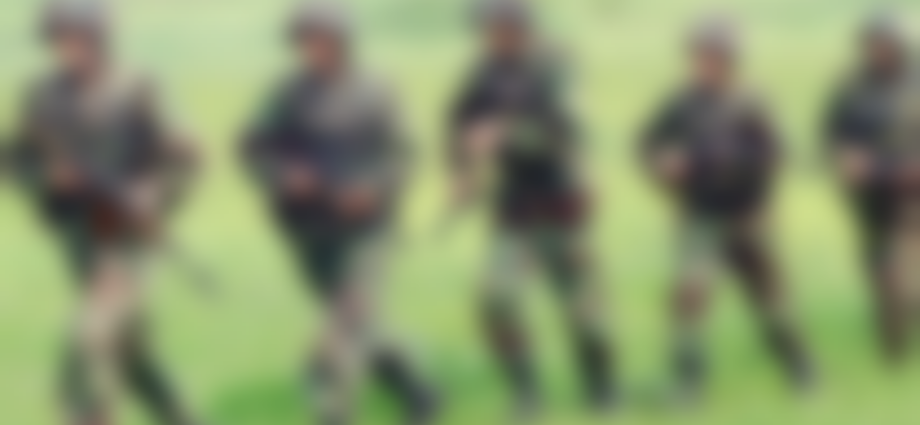


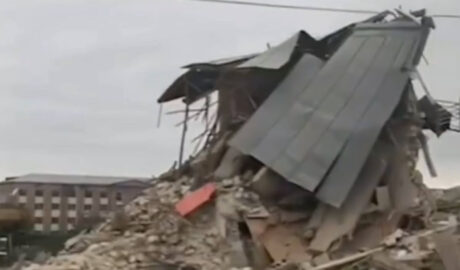
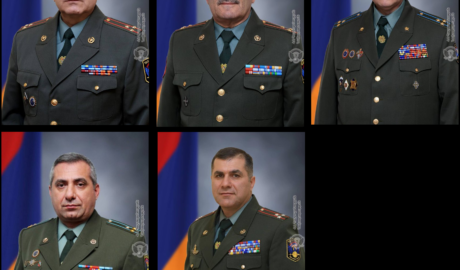
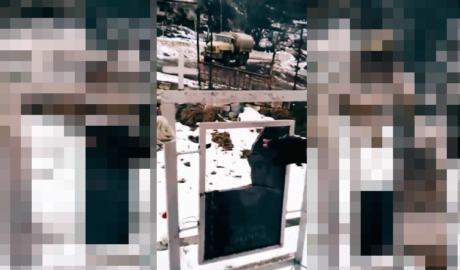
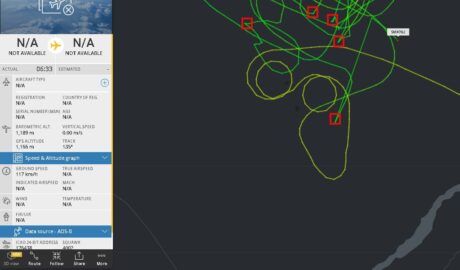
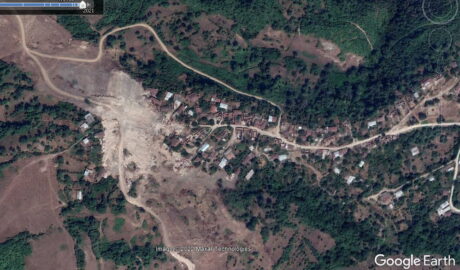
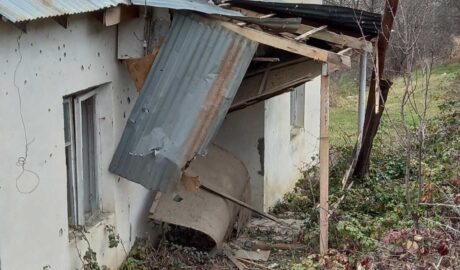
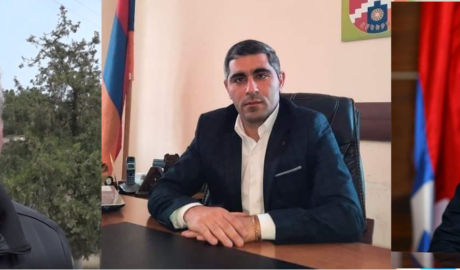
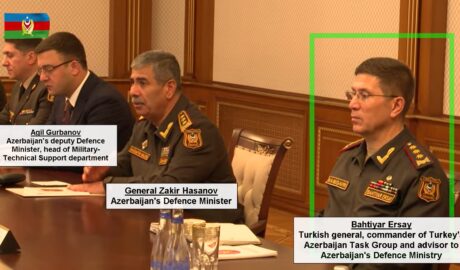
6 Comments
Comments are closed, but trackbacks and pingbacks are open.